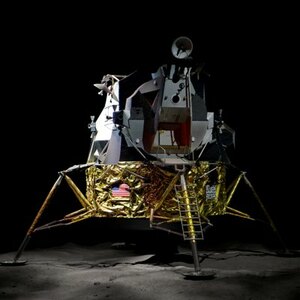

It's an invention that was initially used to help navigate rockets and aid in the navigation of the Apollo missions to the Moon. Now, a much smaller version of the gyroscope can be found in nearly every modern smartphone. The gyroscope in a smartphone detects which way the screen is oriented and also aids in basic compass-like headings when navigating. However, the accuracy of the gyroscopes used in smartphones is relatively poor, and for the burgeoning autonomous vehicle and drone industry that presents a major problem. When the GPS signal is lost on an autonomous vehicle, the accuracy of the backup gyroscope system is critical in maintaining the vehicle's heading. A development at the University of Michigan promises a gyroscope that is 10,000 times more accurate but only 10 times more expensive than those found in the typical smartphone.
The size of this highly accurate gyroscope is only one centimeter wide. Made of a very pure glass, the device resembles a Bundt pan, with a wine glass at the center. The glass is coated with a thin, metallic coating, which is attached to electrodes at its periphery. These electrodes both cause the glass to vibrate and measure the changes in this vibration as it is rotated through space. Combined with three accelerometers and two other gyroscopes, the whole apparatus, called an inertial measurement unit, is able to sense direction and movement in three dimensional space.
The cost of highly accurate gyroscopes has been a major limiter in the production of low-cost inertial measurement units for autonomous vehicles, in the past. Aside from autonomous vehicles, such a breakthrough could also aid soldiers in navigating in areas where GPS signals are weak or have been jammed. Also, this technology could aid indoor navigation, such as for robots in factory or warehouse applications.

